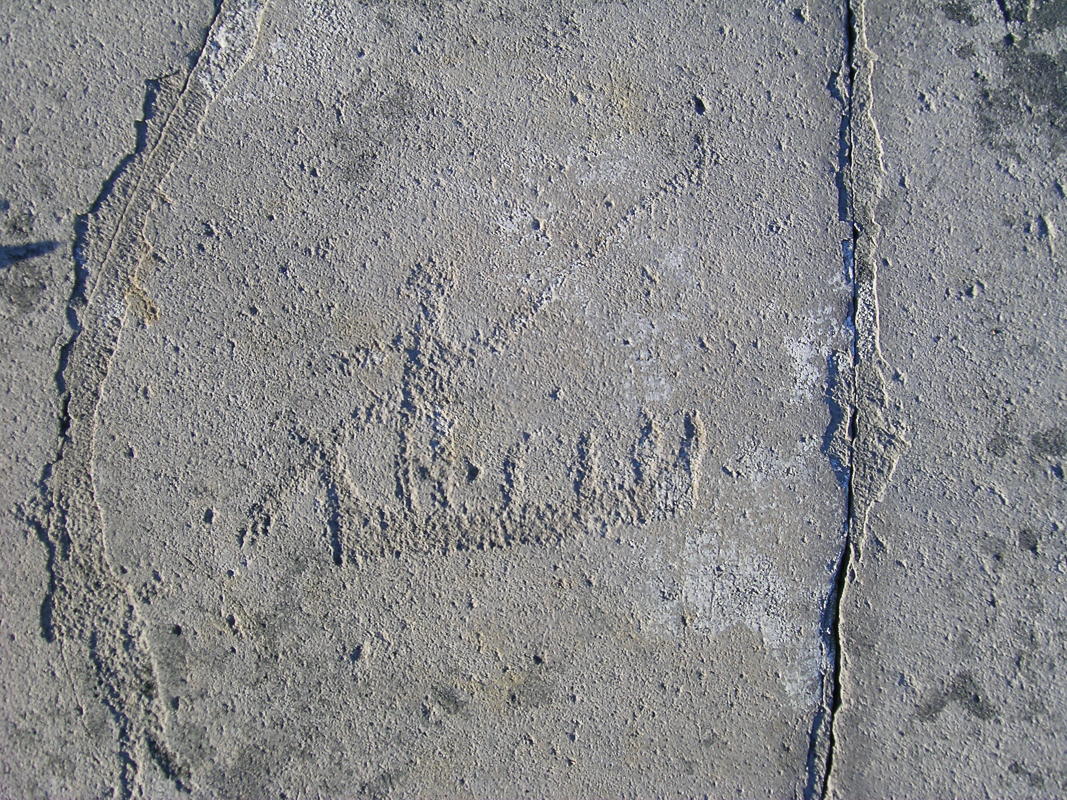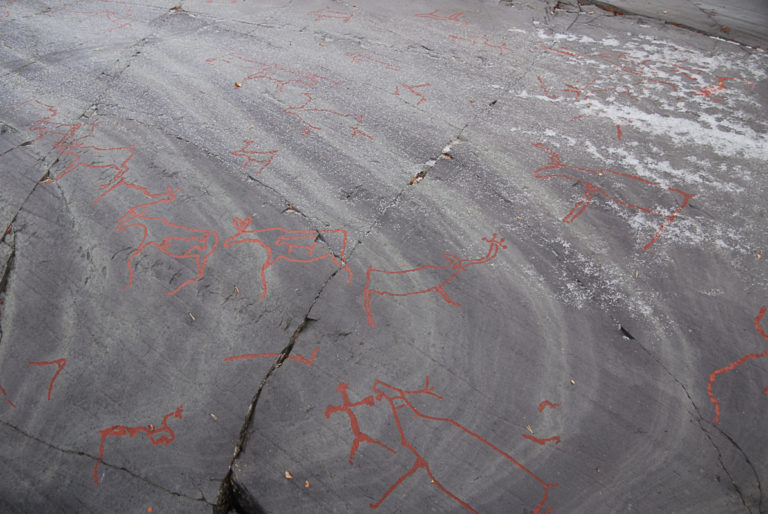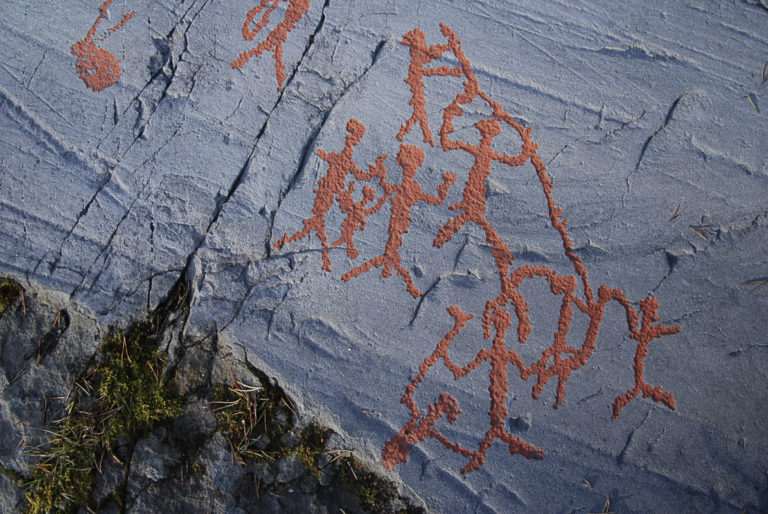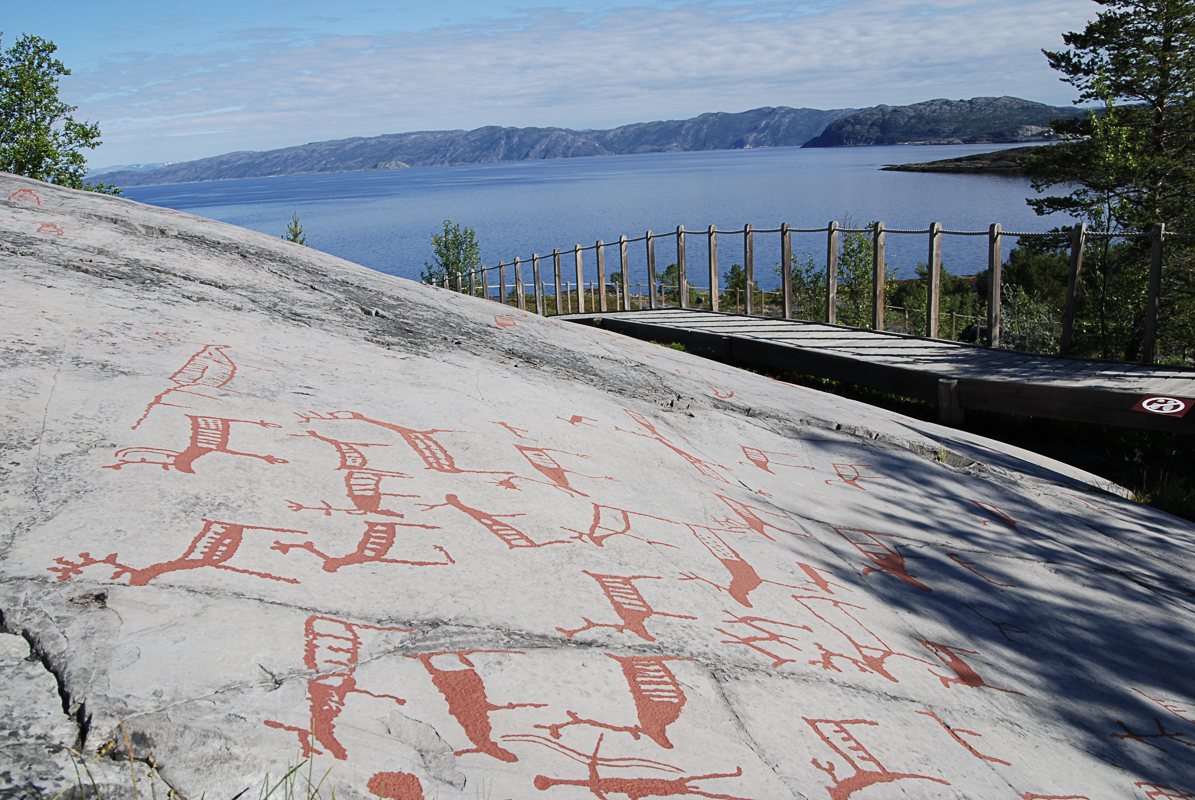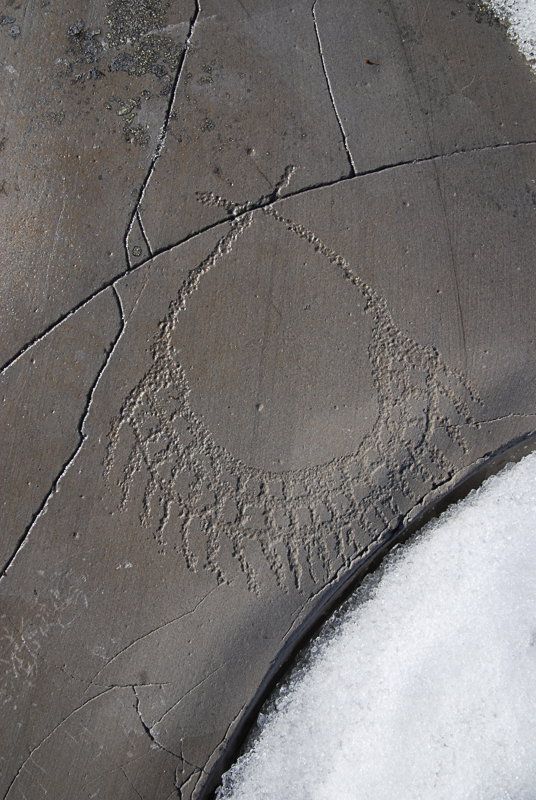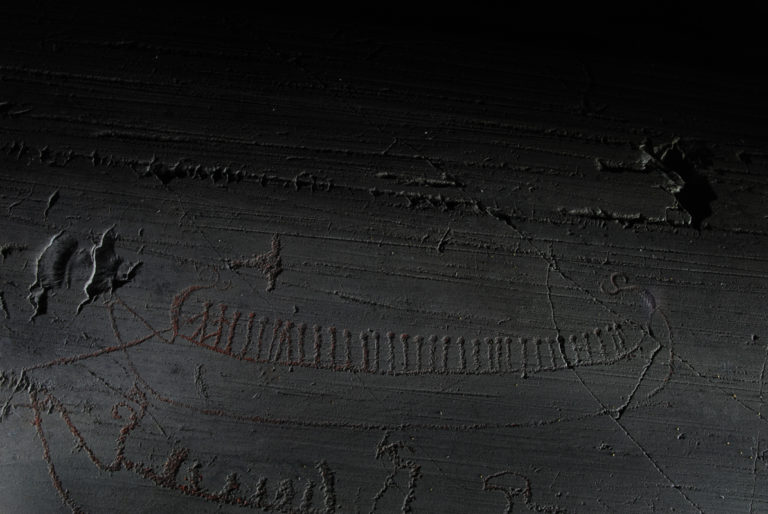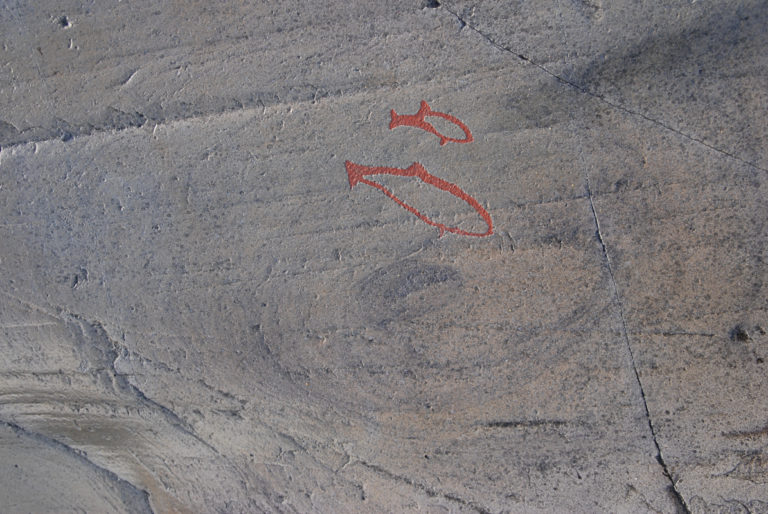Around 6,000 depictions that are up to 7,000 years old are to be found all around Alta Fjord: fishing scenes, bear hunts, animals, geometric figures and portraits of people. The rock carvings in Alta are part of the world heritage and provide us with access to the imaginative world of the Stone Age.
Reindeer and elk swimming – all you can see is their heads sticking up above the water. People in boats with fishing lines and large halibut swimming in the depths. Bear hunting in the spring, with the bear being flushed out of its hibernation in a cartoon-like sequence. Tools, animal life, geometric patterns, people. The motifs of the Alta rock carvings provide unique insight into thoughts and everyday life thousands of years ago.
It’s a mystery as to why they were made
It is often easy to see what the carvings represent, but difficult to know why the people actually made them. Perhaps they were looking to illustrate myths and stories, or perhaps the carvings played a role in the practice of their religion. It is unlikely that we will ever know the definitive answer – as there is no-one to ask!
The rock carvings are found around the whole fjord
The largest concentration of carvings is to be found at Hjemmeluft, due west of the centre of Alta. It is also here that you will find Alta Museum. However, there are carvings to be found in many places. There are a great many at Kåfjordfeltet, for example. It may be that this was a particularly good place to hunt bear and reindeer.
How to see the rock carvings of Alta Fjord
3000 rock carvings can be found at Alta museum in Hjemmeluft on the outskirts of Alta city. The museum can be accessed by car or bus . The other carvings are more difficult to access. You can liaise with the museum about this. Although 3000 should be enough to keep you occupied.
So long as there is no snow you can access the ramps around the museum site. When the snow sets in, sometime between October or November, it is impossible to see them. Between April and May the snow starts to clear allowing you to see the carvings again.
The Alta Museum homepage has all the details you need.
At Transfarelv, there are rock paintings where the red colour has been preserved, and at Langnesholmen, human figures have been carved into a giant rock. Some of the strangest carvings are to be seen at Amtmannsneste, where human figures are represented in almost life size. It is tempting to believe that these are portraits of people who lived here more than 3,000 years ago.
How were the rock carvings dated?
The rock carvings were made over a period of thousands of years. It could be that it was a tradition for the ancient people to gather here on their annual wanderings. When dating ancient relics in Northern Norway, old shorelines are used as the starting point. During the Ice Age 15–20,000 years ago, the land was pressed down by the mass of ice.
When the ice began to melt around 17,000 years ago, the land gradually started to rise again. A Stone Age find high up on the hillside is thus older than one discovered closer to the water, because the people of Northern Norway have always settled as close to the sea as they could. Researchers date the oldest carvings to 5200–4200 BC, and the youngest to 200 BC–200 AD.
The carvings are now a UNESCO heritage site
Alta Museum is located in Hjemmeluft, next to the biggest concentration of rock carvings. At this site, more than 3,000 figures are to be found on 85 panels. A 2.9 km network of paths and ramps leads to a representative selection of the carvings, and guided tours of the rock carvings are organised in the summer months.
In the winter, the area is covered in snow so it is only possible to see the exhibitions inside the museum. The other carvings around Altafjord have not been marked or highlighted. In 1985, the rock carvings were inscribed on the UNESCO world heritage list. Alta Museum also has exhibitions about research into the Northern Lights, Sami culture and Bjørk Wirkola, a notable resident of Alta.
